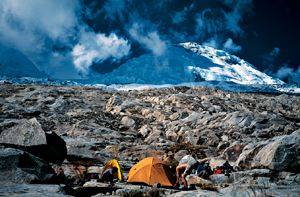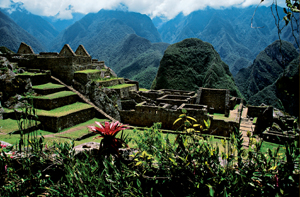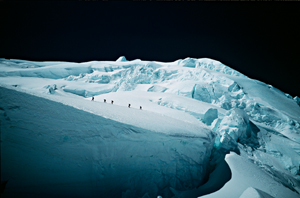


Peruvian Andes, The heritage of climbing in the Andes
In order to gain initial insight into high altitude alpinism, the Peruvian Andes play host to a multitude of summits, each with their own array of difficulties, at the heart of some unique, preserved landscapes.
TEXT & PHOTOS : Stéphane Schaffter
At the time of the Incas, Peru already had a highly structured road network, despite the imposing natural barriers. Prior to its construction, and as legend has it, you had to have the “eye of the falcon, the ear of the donkey, the shrewdness of the monkey and the salesman’s gift of the gab” to reach a destination.
The history of the Andean conquests is a clear reflection of the careers of the great alpinists, who have all taken their first steps at high altitude here prior to tackling the Himalayas.
In the Andes mountain chain, the summits are characterised by aerial summits and snowy meringue-like cornices.
Caught between the surprising coastal deserts and the Amazon, the steep slopes of the “Cerros”, the Castilian name for the summits, provide idyllic itineraries for genuine alpinists.
A trek through the ‘foothills’
The tour of the Huayhuash area of the Andes is an exceptional circuit at the foot of some majestic mountains, capped by jagged glacial crests “of the kind which sometimes make life difficult for climbers". You need twelve days to perform a complete tour.
The gear is loaded on the donkeys, and a small rucksack is sufficient for the day’s food. The different stages follow on one after the other to the rhythm of the steps on the paths linking the villages, which are isolated from all forms of mechanised communication.
In front of the imposing face of the Yerupaja, the second highest summit in Peru, culminating at 6,634m, the Caruacocha Lagoon is a haven of peace where dreams can become a reality. A casual discussion with a sheep farmer, a spot of fishing in search of a fine trout or even the sound of silence, are all forgotten notions in our world.
In order to get a taste of glacier walking, several summits are perfectly suited to an initiation into alpinism as far as the legendary altitude of 6,000 metres.
This trip can be performed at the start of the Matacancha, via the Cacanan Col by following the Selva slope of the Andes, returning via Llamac and Chiquian. A short transfer towards Huaraz, at the foot of the famous White Andes, and the high point of alpinism in Peru, enables you to discover the Chamonix of the Andes, which has become a hub of city-dwellings since the exploitation of the surrounding mines.
Global heritage
Via train, river or the Inca Trail, a visit to Machu Picchu is a must. The lost city of the Incas is a stronghold refuge built in the event of foreign invasion, and ranked as a Unesco world heritage site. The crest path leading to the site is known as camino Inca and comprises sculpted stairs hewn out of the rock and tunnels traversing the steep walls. It stretches across 38 kilometres and leads to the gateway to the Itipuncu where you can discover an environment worthy of a cosmic character from Inca culture.
Read the rest of the article in the Mountain Report magazine - Where to find ?
